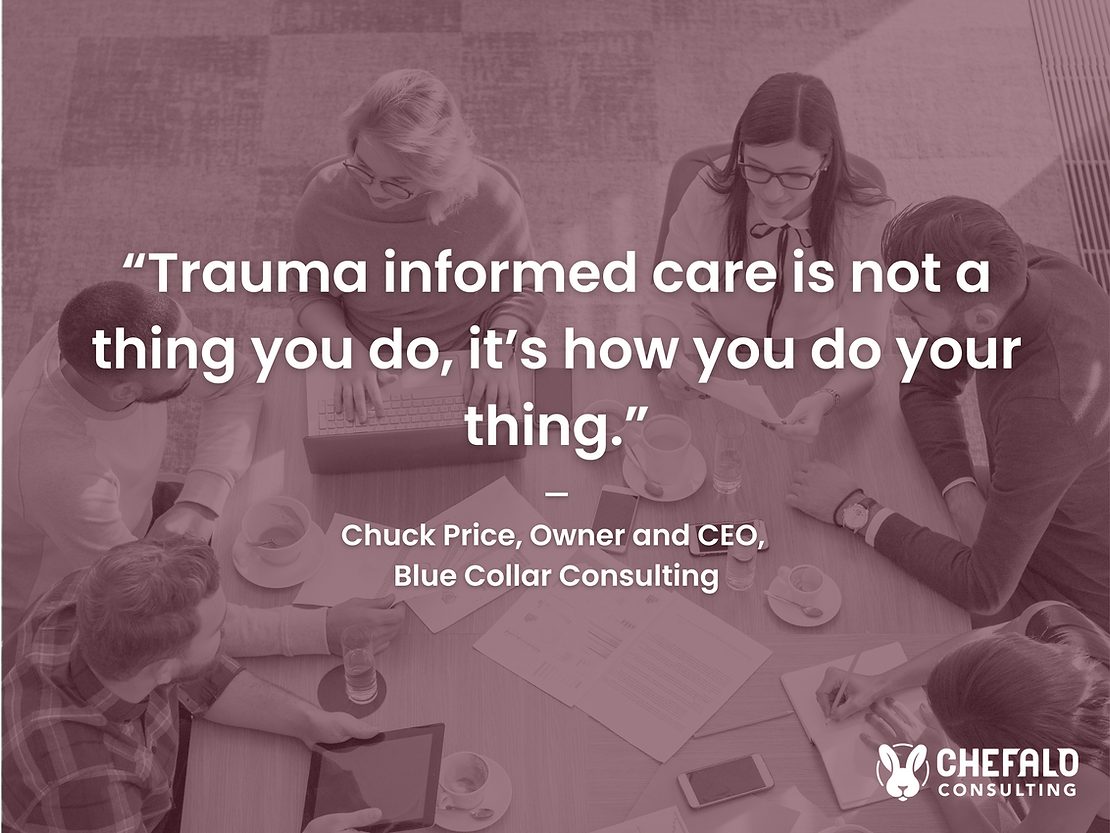Studies show that roughly 62% of employees leave their jobs due to “toxic company culture” (Forbes), revealing that people don’t quit because of their jobs – they quit because of their teams.

Here’s a topic that hits close to home for many leaders and visionaries: turnover. There are countless perspectives on turnover out there, and it’s often framed from the standpoint of “organizational problems.” While it’s important to look at the system as a whole, we also need to dive deeper and consider the individual people and teams that make up the organization.
Here’s the trauma-informed perspective we bring to this conversation – it’s not just about the jobs people leave; it’s the teams they can’t stand.
Professional relationships are at the heart of most organizational issues. Whether we’re talking about communication silos, conflict resolution, collective disturbances, or toxic cultural norms, at the center of all of these issues are humans struggling to navigate relationships with one another.
The story of the “toxic boss who made me leave my job” is a familiar one; and while those experiences are valid (I’m not saying your boss didn’t have their own issues they needed to work through), that perspective can be shifted. I want to encourage us to move away from blaming the leader and toward a more holistic view of the situation.
Instead of placing the blame on one person (we’ve all met the “toxic coworker” or the “toxic boss”), a group of people (the toxic “work clique”), or even the organization as a whole (what we like to call a “toxic culture”), we can choose to exit the reenactment (also known as the “trauma triangle”) and enter the realm of empowerment, progress, and solutions.
So, as you read through these 7 reasons why employees leave their toxic workplace cultures, consider how each point identifies a problem that can be solved through trauma-informed approaches.
If your agency wants to improve company culture, employee wellness, and DEIB initiatives while reducing turnover, these 7 problems might need to be addressed.

In many organizations, the emphasis on getting things done often overshadows the importance of the human beings doing the work. When people’s experiences and emotions are pushed aside in the name of “progress,” the result is often burnout, stress, and disengagement. Employees may feel like mere cogs in a machine rather than valued contributors. By shifting focus to the well-being and development of team members, leaders can foster more supportive and productive work environments.

When there is a disconnect between an organization’s stated values and its actual practices, employees notice. This misalignment can breed distrust and cynicism. For example, if leadership preaches the importance of work-life balance but consistently rewards overtime, employees may feel misled and undervalued. Clear, consistent actions that reflect organizational values are crucial for maintaining trust and morale.

High-stress environments can lead to vicarious trauma, compassion fatigue, and overall burnout. When chronic stress becomes the norm rather than the exception, it can severely impact employees’ mental health and job satisfaction. Implementing regular stress management and wellness programs can help mitigate these effects and promote a healthier, more sustainable workplace culture.

A sense of belonging is essential for both resilience and job satisfaction. When workplace culture becomes cliquish and exclusionary, it alienates individuals and undermines team cohesion. Inclusive practices that celebrate diversity and foster belonging can transform the workplace into a more welcoming and supportive environment for all employees.

Disconnected teams often struggle with collaboration, communication, and morale. This disinterest can stem from a lack of engagement or investment in the organization’s mission. By fostering strong, connected teams through regular team-building activities and open communication channels, organizations can enhance collaboration and renew a sense of purpose among employees.

In many workplaces, the importance of taking breaks, having fun, and building relationships is often overlooked. Yet, these elements are critical to maintaining a healthy and engaged workforce. Encouraging employees to take regular breaks, embrace playfulness, and build meaningful relationships can shift your workplace culture away from toxic norms and towards trauma-informed norms and values.

Unclear expectations and ambiguous job roles can lead to confusion, frustration, and disengagement. It can even contribute to other complex issues such as micromanagement and a lack of transparency. Employees need to understand their responsibilities and how their work contributes to the organization’s goals. Clear communication, regular feedback, and transparent processes can help clarify expectations and empower employees to take ownership of their roles.
Trauma isn’t just something that happens outside the office walls. It impacts every facet of life, including our work environments. By understanding trauma and its effects on behavior and relationships, leaders like you can create safer spaces for open communication and genuine support.
It’s possible to create a workplace where your staff are (and feel!) understood, valued, and respected. Understanding the science of trauma unlocks your potential to harness the power of resilience.
At Chefalo Consulting, we help create resilient communities through sustainable change. Our passion-driven methods contain proven strategies to transform organizations from the inside out. By incorporating trauma-informed practices into your leadership style, you can build teams that are not only cohesive but also incredibly resilient.
These concepts may seem like big issues to tackle, and you might be looking for an easy checklist to follow. If that’s you, I have some news. Firstly, you might be in an active trauma state, struggling to make decisions, plan, or critically think about abstract concepts. If that’s you, make sure to check out Trauma Brain Explained: The Neuroscience of Trauma.
Secondly, trauma-informed approaches do not and will not ever have a concrete checklist. This work looks different in every person, every team, and every agency. That’s part of the beauty of it.

While our trauma-informed systems change programs take multiple years, there are actions you can take right now to start building stronger team dynamics, which are at the heart of successful organizations. Here are some key elements that you can foster within yourself and your team today:
Empathy. Show genuine concern for your team members’ well-being.
Authenticity. Encourage open conversations about challenges both inside and outside work, focusing on acceptance and non-judgment.
Trust. Build trust by being transparent and consistent in your actions.
Learning, not perfection. Foster an environment where mistakes are seen as learning opportunities rather than failures.
Support. Ask for and offer help. Provide resources for professional development.
Recognition. Celebrate achievements regularly. Acknowledge hard work even when it doesn’t lead to immediate results.

Creating a trauma-informed workplace is not a one-size-fits-all solution. It requires ongoing commitment, adaptability, and a deep understanding of the unique needs of your team.
By prioritizing empathy, authenticity, trust, learning, support, and recognition, you can lay the foundation for a resilient, cohesive team. Remember, the goal is not to eliminate all challenges but to equip your team with the tools and mindset needed to navigate them effectively.
At Chefalo Consulting, we are dedicated to guiding you through this transformative journey, helping you build a workplace where every employee feels valued, understood, and empowered to thrive. Together, we can create a culture of resilience and support that drives long-term success and well-being.
To join our community and gain access to our free resources, make sure you’re signed up to our email list!
We can signal to others that they are valuable and worth knowing through …
If you want to improve outcomes at your organization, then focusing on improving …
Trauma is pervasive and often overlooked. By understanding how our survival instincts (also …